york place
york place
Early infill housing in New Town
Not to be confused with York Place off Kingston, York Place in New Town was infill housing at the very northern end of Kiddle's Lane (today's Eastland Road). It was built either side (four houses to the north and two to the south) of the Primitive Methodist Chapel (now the Kingdom Hall of the Jehovah's Witnesses) in 1890 - see Gallery for notice of sale. Shown as a Mission Room on the maps below, the chapel was built in 1891 on the site of a smaller mission hall. At this time, apart from the Mission Hall, this eastern side of Kiddles Lane was not built on between Agra Place, on the corner of Gordon Road, and North Terrace.
By the time of the 1891 Ordnance Survey, the Mission Hall had been considerably enlarged, if not completely rebuilt, and the four houses to its north and two to its south that formed York Place had also been newly-built.
map
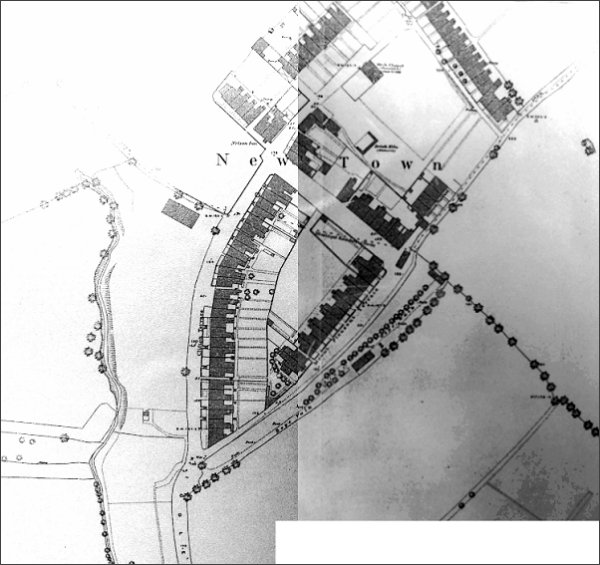
This map (stitched together from pretty poor copies - apologies) is the 1886 Ordnance Survey of New Town. At this time York Place had not been built and the Mission Hall was about to be enlarged.
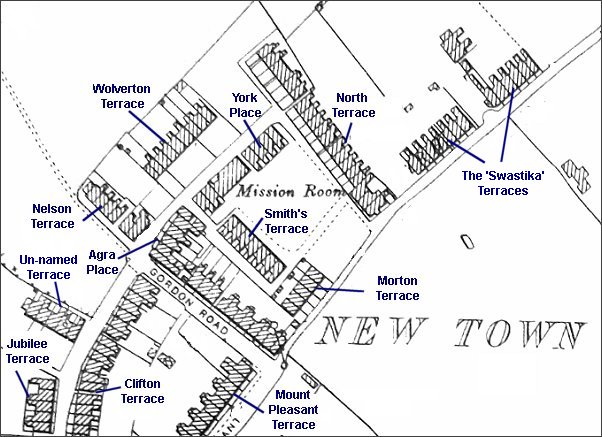
Map based on the 1901 Ordnance Survey showing the different speculative housing projects built in the early days of New Town.
Most of these
developments
have their own
page -
Agra Place,
Clifton Terrace,
Jubilee Terrace,
Mount Pleasant
Terrace,
North Terrace,
Smith's Terrace,
Swastika
Terraces,
Wolverton
Terrace,
York Place,
gallery
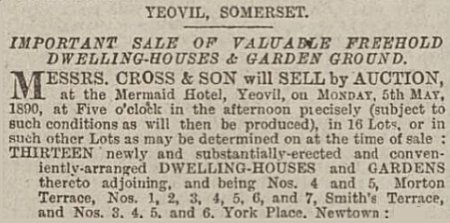
Newly-erected dwellings in Morton Terrace, Smith's Terrace and York Place advertised for sale in the 2 May 1890 edition of the Western Gazette. It was reported in the Western Gazette the following week "There was a good attendance, but every lot was withdrawn, the reserve price not being reached."
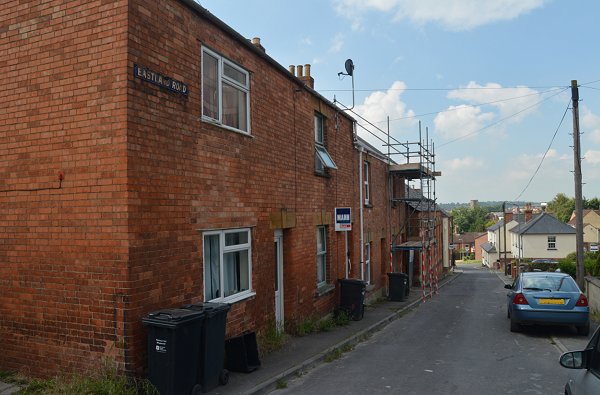
York Place seen from North Terrace - this is at the very northern end of Eastland Road. Photographed in 2014.
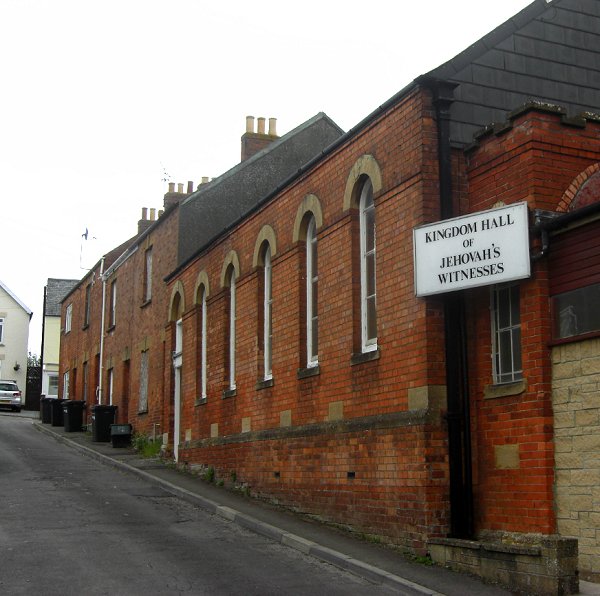
York Place are the four houses beyond the Methodist Chapel, now the Kingdom Hall, as well as two houses on the downhill side. Photographed in 2014.
During the Second World War, the Methodist Chapel was an emergency 'Rest & Feeding Centre' in case of air raids. It had room to sleep 30 and could provide 50 meals at a sitting. The Centre was available for the benefit of people whose homes had been destroyed or made uninhabitable by enemy action, or who were required to vacate their homes temporarily on account of danger from unexploded bombs. It was also available for the benefit of people whose normal means of cooking meals at home were cut off owing to damage to the public gas or electricity supply systems, or of wage earners who had migrated from the town to adjacent areas for a few days but who required their mid-day meal in Yeovil. No charges were made for meals supplied at the Centre for the first 48 hours after an air raid, but thereafter payment would be required.